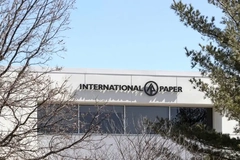Standardization and international action can tackle pollution in Latin America, finds study

Central American countries face heavy plastic bottle pollution, driven by high beverage consumption and a deficiency in waste management systems, according to new research. The researchers call for a shift to standardized, returnable bottles across the region, combined with international actions like the UN Global Plastics Treaty to support collaborative solutions and protect ecosystems.
The study, published in the Journal of Cleaner Production, sampled plastic beverage bottles and loose caps. It used product information to determine their abundance, provenance, and characteristics along 12,000 kilometers of coastline in ten Latin American Pacific countries. Among all sampled plastic items, 26% were manufactured by The Coca-Cola Company, followed by PepsiCo and the Aje Group.
Martin Thiel, a co-author and the managing director at Marine Global Earth Observatories, tells Packaging Insights: “The UN Global Plastics Treaty can help to establish and implement efficient solutions. It can help international collaboration, and especially coordination among countries and companies. For example, if countries implement reusable bottle schemes, they should be coordinated and include interchangeability.”
The study brought together school children, park rangers, university students, fisheries administrators, scientists, and volunteers. “If this alliance, coordinated by a small participatory science program, is capable of conducting an international scientific study of this extent, multinational companies and committed government agencies should be able to reach basic agreements that ensure clean oceans without unnecessary plastic pollution.”
 A total of 356 brands belonging to 253 companies were identified, the most frequent being The Coca-Cola Company.The role of multinational corporations
A total of 356 brands belonging to 253 companies were identified, the most frequent being The Coca-Cola Company.The role of multinational corporations
The study covered Mexico, Guatemala, El Salvador, Nicaragua, Costa Rica, Panama, Colombia, Ecuador, Peru, and Chile. Between 2023 and 2024, citizens and other participants joined forces with scientists to collect samples of plastic beverage containers and their caps on Latin America’s Pacific coast to determine the abundance, source, and characteristics of these pollutants.
The study highlights that locally operated production plants of multinational corporations and the use of single-use, individual-sized bottles are major contributors to regional plastic pollution.
“The goal of our study was not to do finger-pointing but to generate essential information that can help to design efficient solutions. If the three companies that produced most of the bottles identified in this study switched toward reusable bottles, more than 50% of pollution could be avoided,” says Thiel.
“These leading companies have an important responsibility. If they lead this movement toward efficient reduction of plastic pollution, all the smaller companies will readily follow their lead. The companies have an opportunity to generate positive change.”
Standardization as suggested solution
Of the plastic items collected, more than 59% originated from within the region. Smaller shares came from Asia (1.8%), North America (0.3%), and Europe (0.04%). In 38.7% of cases, the origin could not be identified.
“Along Latin America’s Pacific coast, most of the bottles found in the study were less than one year old, indicating that a lot of pollution had been generated over a relatively short period of time,” shares Thiel.
“Also, most bottles were relatively local, highlighting that solutions need to be local. While there is some transport between countries, for example, by rivers or via marine currents, most plastic pollution is of local origin.”
“If all companies use the same bottle format, no bottle will be left behind in the environment. This is something very simple and straightforward, but it requires political decisions and international coordination and implementation.”  A full ban on single-use plastics has not yet been implemented in Central American countries.
A full ban on single-use plastics has not yet been implemented in Central American countries.
Identifying consumer habits and waste management strategies
The majority of foreign packaging waste found on Latin America’s island beaches originates from Asia, with 42.4% of the collected single-use beverage bottles originating from the region.
The study indicates that the higher number of plastic bottles from Asia on island beaches is likely due to dumping from ships.
Ostin Garcés-Ordóñez, lead author of the study and member of the University of Barcelona’s Consolidated Research Group in Marine Geosciences in Spain, says: “The distribution of bottle origins is not random, but geographically structured, with a predominance of specific countries of origin in specific environments and sub-regions, and also in specific countries, of course.”
“This trend would reflect the consumption habits, waste management practices (where they exist), and oceanographic transport processes that influence the distribution of these plastic pollutants.”
Thiel concludes that the solution to reduce this type of pollution is to adopt reusable bottles with return systems. “Multinational companies and governments dedicated to a sustainable future should be able to coordinate a uniform bottle format so that the reusable bottle schemes are universal across all countries.











